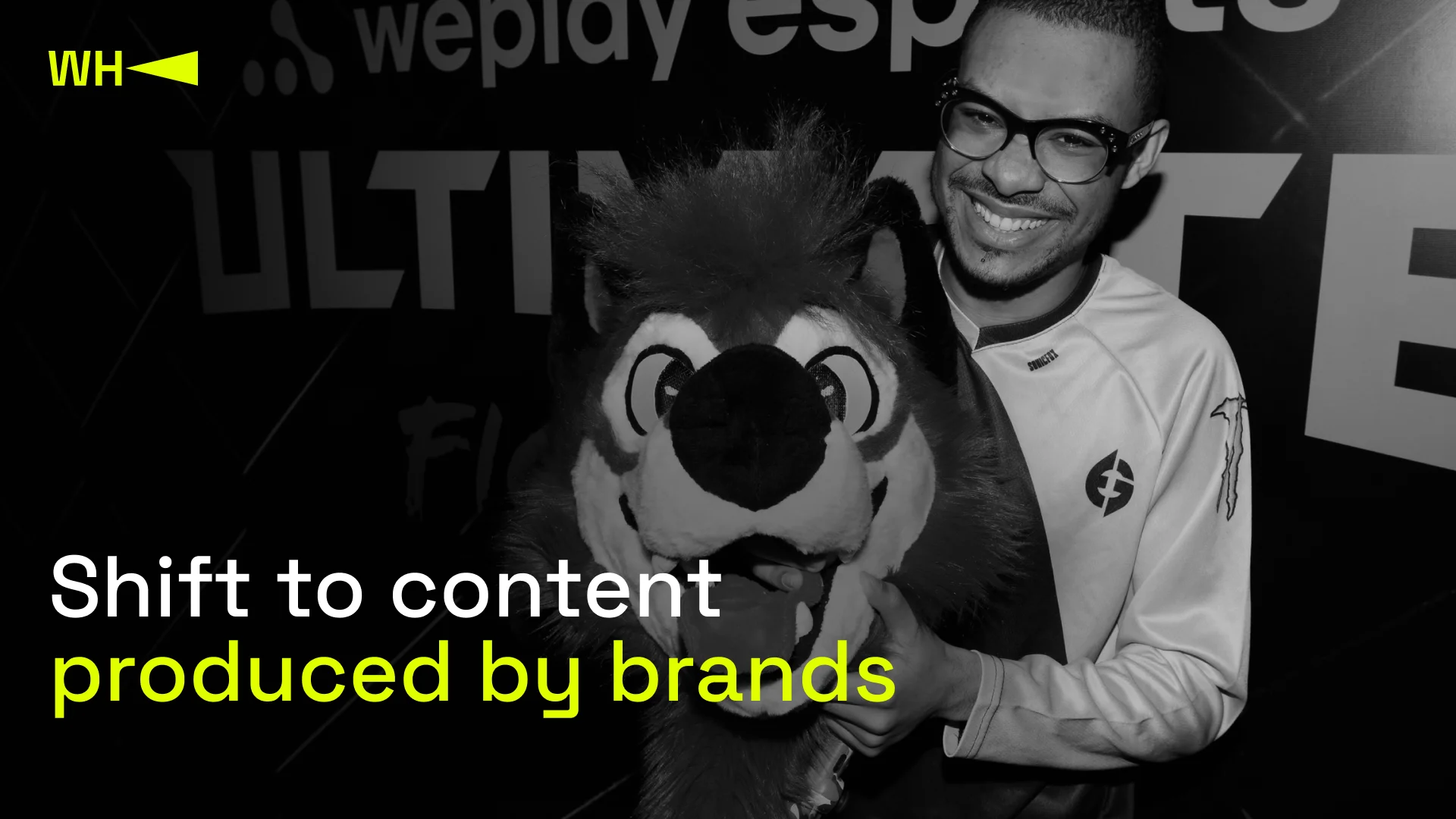Aug. 30, 2023
Not Branded Content but Content Filmed by Brands: The Evolution of Content Marketing

6 min read
Banner ads may come short of reaching the target audience nowadays. A phenomenon called banner blindness is reported by about 86% of users and makes them simply immune to almost any kind of special offers, sales, or ads. Brands may well still use eye-popping banners to catch prospects, but they don’t rely on them as a key strategy. Looking for other ways to reach their target audience, marketing specialists turn to SMM, content marketing, high-profile collaborations, and branded content.
Today, I would like to talk about another way of brand promotion: content filmed by brands. At its core, branded content and content filmed by brands have a lot in common. Unlike direct advertising, these two are used not to advertise a specific product but to tell people about a brand, showcase its message, and convey its values to the audience. Such content looks natural, evokes emotions, and humanizes the brand.
How companies use branded content
Apple offers its products to studios and does not restrict their use in films and TV shows as long as they are shown in the best light. I hope that it won’t be a spoiler if I tell you that villains are unlikely to appear onscreen wielding an iPhone or a MacBook. So, the use of iPhone products is emotionally associated with good characters.
If you look closely, you will find references to lots of brands in films and series. The characters don’t just call a taxi — they call an Uber or a Lyft; they don’t just have a beer — they get a Corona with lemon — in a word, they create an ideal picture that brands fit into. In addition, cult series and films create a strong brand association with a particular character: think Carrie Bradshaw and Manolo Blahnik, Marty McFly and Nike sneakers, James Bond and Aston Martin (even though the hero changes cars every now and then throughout the films).
Shift to content produced by brands
The above examples show that branded content adds humor, character traits, and more colors to the picture. A new and significant change in content marketing trends is that brands get less branded content from creators, influencers, or filmmakers. They start producing content themselves, conveying the same ideas, brand assets, and brand philosophy without directly advertising a particular product.
For example, the recently released Barbie movie grossed $130 million in its opening weekend, expanding the brand’s audience not only to girls and their moms but also to many moviegoers from all over the world. The Barbie brand has done a great job raising a new generation of strong women: confident, ambitious, knowing they can be anything they want. Because this is Barbie: she is a president, a teacher, a model, a doctor — she is all things at once!
The film went the extra mile to cement the brand’s reputation as a people-centric company by bringing in comedian Will Ferrell to become Mattel’s CEO. This makes the audience see the vast Mattel corporation as human-faced, funny, and daring. Essentially, the film doesn’t create Barbieland — it represents how children see their imaginary world full of Barbies (and Kens).
Barbie is one of the many examples of content filmed by brands. Fans have already seen The Lego Movie, the Arcane series that invited us into the realm of Runeterra, the lore of Riot Games’ flagship game, the Air movie, which tells us the story of the Nike Air series launch, and so on.
Content by brands is not necessarily movies or TV shows. Dove filmed a social experiment where it asked participants to describe themselves in their own words to an artist who had never seen them. The campaign shows the brand’s values more than your everyday ads.
Barbie is a movie, not a toy ad, but it did make sales go up anyway. Toys R Us already reported a 30% growth in Barbie doll sales after the movie pre-screening and release. The Toy Story animated film created a boom for certain types of old-fashioned toys. For example, the sale of Mr. Potato Head by Mattel increased by 800% after the movie’s release. Moreover, the Slinky Dog toy, discontinued altogether a few years before the film’s release, had to be rushed back to the shelves due to demand.
Tips for creating successful branded content
Branded content is just a tool, and like any other tool, it can be abused. I’m sure you’ve seen the type of ad that makes you go all, “What were they thinking when they did that?” When a brand doesn’t have a clear idea of the message it wants to convey or tries to hype up a topic while remaining tone-deaf to the context, its marketing campaign goes unnoticed or can even offend people.
To create successful branded content, brands need to:
Bring value
A brand is there for the audience, not the audience for the brand. These days, companies are redefining their approach to marketing strategies and rethinking their value to the public. By studying the audience’s interests, brands build a vertical content marketing structure so that the label and its assets are represented in lifestyle, entertainment, games, music, sports, and other aspects of modern life. Brands create content that promotes them as collectives who get the hobbies of their fans, like the NFL with its NFL Tuesday Night Gaming show. By avoiding aggressive advertising, a brand becomes an object of interest and expands its customer base.
Collaborate with content creators
People follow people. Cloudinary reports claim that 78% of millennials and 70% of zoomers look for user-generated content before deciding on a purchase. A brand’s task is to create an opportunity and encourage the users to continue generating such content. For example, the Barbie movie promoters acted wisely by placing Barbie Box photo zones in cinemas. Thousands of people lined up to take pictures inside the pink box. I’m sure some bought movie tickets just to take a photo and post it on social media.
To reach even wider audiences, brands consider partnering with popular content creators. In general, investing in collaborative content with influencers helps brands reach more people as the blogger or streamer already has an audience that loves them, which means a brand’s content featuring them may also be compelling. Of course, before proceeding to this step, it’s worth analyzing the content creator’s audience and their interests to ensure that the brand’s values meet theirs.
Be open
A brand needs to evoke emotions to build a relationship with the audience. If a marketing strategy elicits a genuine laugh and conveys the brand’s opinions or feelings, it makes one sympathize with the cause — and the company that initiated it. All this affects the brand’s image in people’s eyes; the more human a brand looks, the closer it is to its fans. Displaying carefully curated photos and airbrushed faces and creating a picture of a perfect world is no longer as valuable as showing sincerity, vulnerability, and humanity.
We are all surrounded by content, and trying to sell something using content runs the risk of blending in with the crowd. In order to attract attention and remain a valid talking point, to become part of people’s lifestyles, a brand needs to provide what they want. Want to create a social experiment that will help people understand each other better, publish an in-depth study on a burning topic, or just create an entertainment show? Go ahead — if the audience is interested, they will be interested in you, too.

